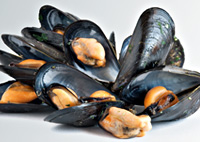
The monthly sampling will now be replaced by surface monitoring of the mussel bed areas and used to inform the investigations into radium contamination at Dalgety Bay.
Investigations into the presence and movement of particles in this environment is continuing. In the meantime, however, the precautionary restrictions on the gathering of seafood will remain in place.
The Agency will review these restrictions in light of evidence from the ongoing work by the Scottish Environment Protection Agency (SEPA) and Ministry of Defence (MoD) contractors.
Background
The radioactive material at Dalgety Bay is thought to originate from luminescent paint containing radium. This was used by the MoD on aircraft when the area was in military use as Donibristle Airfield. The site was decommissioned after the Second World War, and waste material containing radium may have been buried in man-made ground adjacent to the coast.
Items containing radioactive radium-226 have been detected at Dalgety Bay since 1990. Despite clean-up operations undertaken by the MoD, an intensive survey by the SEPA begun in September 2011 found many radioactive items on the beach. Some had relatively high radioactivity levels, and may have been released by coastal erosion.
The seafood sampling was managed jointly by the Food Standards Agency in Scotland and SEPA and results are reported to the Dalgety Bay Particles Advisory Group.
Science behind the story
Radium-226 is a radioactive element that decays by alpha particle emission and has a half-life of 1,600 years, producing radioactive breakdown products including radon and lead. In the past it has been used to luminise instruments such as aircraft dials so that they can be seen in the dark.
Some of the items break down easily, making it possible for small particles to be taken up by seafood such as cockles and mussels. If a person eats the seafood containing radioactive material, it may cause damage to their digestive tract and an increased risk of developing cancer.





